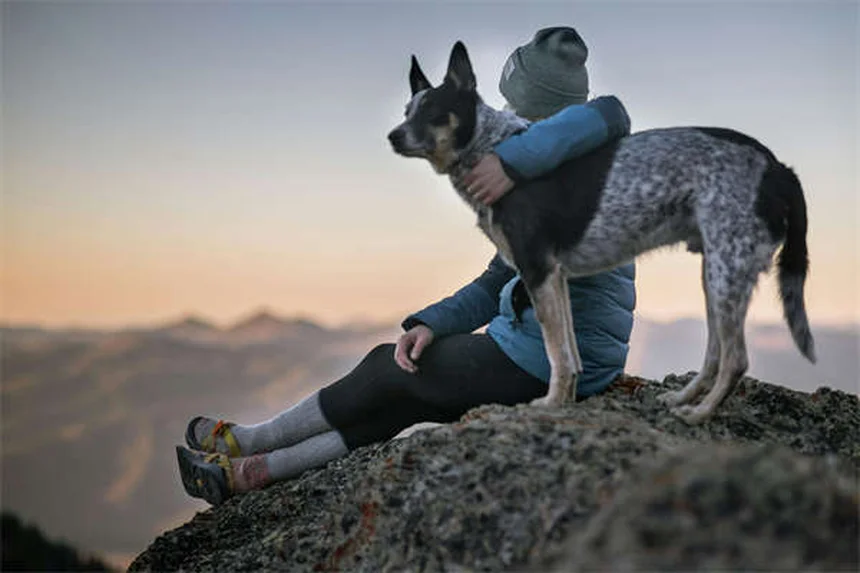What is high-rise syndrome in cats? The answer might surprise you: it's when cats fall from heights above two stories and survive with unique injuries. We've all heard the myth that cats always land on their feet, but the reality is more complex. While 90% of cats survive these falls, about 1 in 3 need emergency vet care to pull through. Here's something wild - cats actually have better survival rates from higher falls (7+ stories) than shorter ones! That's because they reach terminal velocity after about seven floors and instinctively relax their bodies like tiny skydivers. But don't let these survival statistics fool you - prevention is always better than treatment when it comes to our feline daredevils.
E.g. :15 Heartfelt Ways to Memorialize Your Beloved Pet
- 1、Understanding High-Rise Syndrome in Cats
- 2、Spotting Trouble: Symptoms You Can't Miss
- 3、Why This Happens: Behind the Scenes
- 4、Veterinary Detective Work: Diagnosis
- 5、Road to Recovery: Treatment Options
- 6、Keeping Your Cat Safe
- 7、Answering Your Burning Questions
- 8、Final Thoughts From Your Vet
- 9、The Hidden Dangers of Urban Living for Cats
- 10、Understanding Feline Psychology
- 11、Beyond Physical Injuries
- 12、Innovative Prevention Strategies
- 13、When Prevention Fails: Emergency Response
- 14、Long-Term Care After a Fall
- 15、FAQs
Understanding High-Rise Syndrome in Cats
What Exactly Is This "Falling Cat" Phenomenon?
Picture this: your curious kitty slips from your 10th-floor apartment window. High-rise syndrome describes the injuries cats get from falls above two stories. We're talking broken bones, lung bruises, and facial trauma - the whole nine yards.
Here's something wild: cats actually have better survival rates from higher falls! Studies show they reach terminal velocity (about 60 mph) after seven stories. At that point, they instinctively relax their bodies like tiny skydivers, reducing injury impact. 90% survive these falls, but about 30% need immediate vet care to pull through.
Why Cats Become Daredevils
Ever wonder why your cat stares intently at birds outside? That intense focus combined with their natural curiosity creates the perfect storm for accidents. Young cats (under 2 years) account for most cases - they haven't learned caution yet!
During summer months, cases spike by 40%. Why? Open windows become irresistible invitations for our feline friends. And get this - cats don't actually "fall" most times. They intentionally jump after prey or lose balance while snoozing on narrow ledges.
Spotting Trouble: Symptoms You Can't Miss
 Photos provided by pixabay
Photos provided by pixabay
Immediate Warning Signs
If your cat takes a tumble, watch for these red flags:
- Labored breathing or panting (cats shouldn't pant like dogs!)
- Cold paws and pale gums (signs of shock)
- Limping or inability to stand
Did you know facial injuries occur in 75% of cases? Look for broken teeth or blood around the mouth. One patient I treated, Whiskers, had a fractured jaw but still tried to purr - talk about tough cookies!
Delayed Symptoms That Sneak Up
Some issues don't appear immediately. Within 48 hours, watch for:
- Decreased appetite (even for tuna!)
- Lethargy lasting more than a day
- Strange litter box habits
Why This Happens: Behind the Scenes
The Physics of Falling Felines
Cats have an incredible righting reflex - they can twist mid-air to land feet-first. But here's the kicker: shorter falls (2-6 stories) often cause worse injuries than higher ones. The table below shows the surprising statistics:
| Fall Height | Survival Rate | Common Injuries |
|---|---|---|
| 2-6 stories | 85% | Multiple fractures |
| 7+ stories | 90% | Single fractures, lung bruises |
 Photos provided by pixabay
Photos provided by pixabay
Immediate Warning Signs
Kittens under 1 year account for 65% of cases. Why? They haven't developed:
- Depth perception skills
- Caution around edges
- Coordination for narrow spaces
Veterinary Detective Work: Diagnosis
The Initial Exam
When you rush into the clinic, we immediately:
- Check vital signs (heart rate, breathing)
- Look for obvious wounds
- Assess mental awareness
Remember Mr. Fluffy? His X-rays revealed a fractured pelvis we couldn't see externally. That's why imaging is crucial - about 60% of injuries are internal.
Advanced Testing
We might recommend:
- Blood tests (checking organ function)
- Ultrasound (looking for internal bleeding)
- CT scans (for complex fractures)
Road to Recovery: Treatment Options
 Photos provided by pixabay
Photos provided by pixabay
Immediate Warning Signs
The first 24 hours are critical. We focus on:
- Oxygen therapy (for lung injuries)
- Pain management (no one likes hurting)
- Fluid therapy (preventing shock)
Did you know 40% of cases need temporary feeding tubes? Facial injuries often make eating painful. But cats bounce back amazingly - I've seen patients start kneading blankets within days of major surgery!
Long-Term Healing
Recovery involves:
- Activity restriction (sorry, no zoomies!)
- Soft food diets
- Physical therapy (yes, for cats too!)
Keeping Your Cat Safe
Window Safety 101
Here's my foolproof plan:
- Install sturdy window screens (check them monthly)
- Keep windows only partially open
- Remove nearby furniture (no stepping stones!)
Creating Safe Outdoor Spaces
Consider these alternatives:
- Catios (outdoor enclosures)
- Supervised leash time
- Window perches with safety harnesses
Answering Your Burning Questions
Can cats really survive 30-story falls?
Believe it or not, yes! One famous case involved a cat named Sabrina who fell 32 stories and lived. How? The longer fall gave her time to position herself optimally. But please - don't test this theory!
What's the most common fracture site?
Back legs take the brunt - especially the tibia (shin bone). Front legs usually escape serious damage because cats instinctively extend their rear legs during falls.
Final Thoughts From Your Vet
While cats have amazing survival instincts, prevention beats treatment every time. I've treated enough high-rise cases to know that simple precautions save lives. Your feline friend might think they're invincible, but it's our job to be their safety net.
Remember: if an accident happens, don't wait. Even if your cat seems fine, internal injuries can be sneaky. My clinic's number should be on your fridge - because when it comes to our furry daredevils, it's always better to be safe than sorry!
The Hidden Dangers of Urban Living for Cats
City Life vs. Country Life for Felines
You might think city cats have it made with cozy apartments and regular meals, but urban environments present unique risks. While country cats face predators and cars, city cats deal with vertical dangers they didn't evolve to handle.
In my practice, I've noticed apartment-dwelling cats suffer three times more fall-related injuries than their rural counterparts. The concrete jungle below high-rises offers no soft landing - just unforgiving pavement. Did you know a fall from just three stories can be fatal on concrete, while cats often survive similar drops onto grass?
The Seasonal Spike in Accidents
Spring and summer bring more than just sunshine - they bring a 60% increase in high-rise syndrome cases. Why? Because we humans love opening windows when the weather turns nice, forgetting our cats see every open window as an invitation to adventure.
Here's a sobering fact: most falls happen between 4-8 PM when cats are most active and owners are distracted making dinner or relaxing after work. I always tell my clients - if you're airing out your apartment, supervise your cat like you would a toddler near a swimming pool.
Understanding Feline Psychology
The Prey Drive That Gets Them in Trouble
Ever seen your cat's pupils dilate at the sight of a pigeon? That intense focus comes from thousands of years of evolution. Modern cats retain the same hunting instincts as their wild ancestors, even if their "prey" is now just city wildlife outside a window.
What most owners don't realize is that cats don't understand glass. To them, that bird on the other side of the window appears within reach. When they pounce, they're often surprised to hit an invisible barrier - or worse, discover the window was open all along.
The Myth of the "Always Landing on Their Feet" Cat
While cats do have an amazing righting reflex, it's not foolproof. Younger cats haven't fully developed this skill, and older cats may lose some coordination with age. Plus, the reflex needs about 3 feet of falling distance to work properly - something they don't always get from a windowsill.
Here's something that might surprise you: overweight cats actually fare worse in falls. Their extra weight increases impact force while decreasing agility. That chonky belly you love to rub could literally be a liability in a fall situation.
Beyond Physical Injuries
The Emotional Trauma We Often Overlook
While we focus on broken bones and lung injuries, many cats suffer psychological effects after a fall. Some develop lasting anxiety around windows, while others become clingy and fearful of being alone.
I treated one cat, Mittens, who refused to go near windows for six months after her fall. Her owner had to gradually reintroduce her to sunny spots using treats and positive reinforcement. Behavioral recovery can take longer than physical healing - something many owners aren't prepared for.
The Financial Impact on Pet Owners
Let's talk dollars and cents - because emergency vet care isn't cheap. The average high-rise syndrome case costs between $1,500-$5,000 to treat. Compare that to the $20 cost of a sturdy window screen, and prevention becomes a no-brainer.
| Prevention Method | Cost | Potential Savings |
|---|---|---|
| Window screens | $15-$50 | Up to $5,000 |
| Cat harness/leash | $20-$40 | Up to $5,000 |
| Emergency vet fund | $500+ | Peace of mind |
Innovative Prevention Strategies
High-Tech Solutions for Modern Cats
Some innovative pet products now address high-rise syndrome specifically. There are window sensors that beep when a cat gets too close, and even smart screens that can detect when a cat is putting weight against them.
One of my clients installed a motion-activated sprinkler near their balcony - harmless but startling enough to keep their adventurous Bengal from getting too curious about the edge. Sometimes the best solutions come from thinking outside the litter box!
Training Your Cat to Respect Boundaries
Can you train a cat to stay away from windows? Surprisingly, yes! Using positive reinforcement techniques, many cats can learn that certain areas are off-limits. The key is consistency and making safe spaces more appealing than danger zones.
Try placing cat trees or cozy beds a few feet back from windows. Over time, your cat may prefer these safer vantage points. And always reward them with treats when they choose the safe spot over the windowsill - positive reinforcement works wonders.
When Prevention Fails: Emergency Response
First Aid for Fallen Felines
If the worst happens, knowing basic first aid can buy crucial time. Keep a pet first aid kit handy with gauze, a pet carrier, and a blanket. Never attempt to set fractures yourself - your job is to stabilize and transport.
Here's a pro tip: if your cat falls, try to note the landing position. This helps vets predict injury patterns. Did they land on their side? Feet first? This information can be as valuable as the examination itself.
The Critical First Hour
Did you know the first 60 minutes after a fall are the most critical for survival? This "golden hour" concept comes from human emergency medicine but applies to cats too. Immediate veterinary attention can mean the difference between recovery and tragedy.
Have your vet's emergency number programmed into your phone, and know the fastest route to the clinic. Time spent searching for addresses or waiting for an Uber could cost precious minutes when every second counts.
Long-Term Care After a Fall
Physical Therapy for Cats
Many people don't realize that cats can benefit from physical therapy just like humans. After serious injuries, rehabilitation might include:
- Hydrotherapy in special tanks
- Therapeutic laser treatments
- Passive range-of-motion exercises
I've seen cats regain nearly full mobility after months of dedicated rehab. The key is starting early and being consistent - feline patients can be stubborn, but they respond remarkably well to gentle, persistent therapy.
Modifying Your Home for Recovery
A recovering cat needs special accommodations. You might need to:
- Replace high-sided litter boxes with low-entry models
- Add ramps or steps to favorite perches
- Provide orthopedic bedding for comfort
Remember, recovery isn't just about healing bones - it's about restoring quality of life. With patience and the right modifications, most cats can return to their happy, active selves.
E.g. :High-Rise Syndrome in Cats | PetMD
FAQs
Q: How high can cats fall without getting hurt?
A: Here's the crazy truth - cats can survive falls from incredible heights, sometimes even 30+ stories! But here's what we know from veterinary studies: falls from 2-6 stories actually cause more severe injuries than higher falls. After about seven stories (around 70 feet), cats reach terminal velocity (about 60 mph) and instinctively spread out like little parachuters. This position helps distribute the impact. The most dangerous falls are actually those "middle height" drops where cats don't have time to properly position themselves. But remember - just because they can survive doesn't mean they should! We always recommend preventing falls in the first place.
Q: What are the most common injuries from high-rise syndrome?
A: When cats take these dramatic falls, we typically see three main types of injuries - we call it the "high-rise triad." First, chest trauma like bruised lungs or collapsed lungs occurs in about half of cases. Second, facial injuries including broken teeth or jaw fractures happen in 75% of falls. Third, orthopedic injuries - especially back leg fractures - are super common. The tibia (shin bone) breaks most often, followed by the femur. What's fascinating is that front legs usually escape serious damage because cats instinctively extend their rear legs during falls. If your cat takes a tumble, even if they seem fine, we always recommend an immediate vet visit because internal injuries can be sneaky!
Q: Why do younger cats have more high-rise syndrome cases?
A: Great question! Kittens and young cats (under 2 years) account for about 65% of high-rise cases. There are three key reasons for this. First, they haven't fully developed their depth perception skills yet. Second, they lack the caution that older cats naturally develop - they're just too curious for their own good! Third, their coordination isn't fully honed for navigating narrow ledges. We often see cases where a kitten was happily napping on a windowsill, then rolled over in their sleep... and boom. That's why we recommend extra precautions with young cats - secure those windows and maybe keep them out of high-risk areas entirely until they're older and wiser.
Q: What should I do if my cat falls from a window?
A: First - don't panic, but act quickly! Here's our step-by-step emergency protocol: 1) Gently place your cat in a carrier (even if they seem fine) to prevent further injury. 2) Head straight to the nearest emergency vet clinic - don't wait to see if symptoms develop. 3) On the way, check for obvious injuries but avoid moving them too much. 4) Tell the vet exactly how far the fall was - this helps predict potential injuries. Remember: cats are masters at hiding pain, so even if Whiskers seems perfectly fine, internal injuries could be brewing. The first 24 hours are critical for monitoring and treatment. Better safe than sorry when it comes to our feline friends!
Q: How can I cat-proof my windows to prevent falls?
A: We're so glad you asked! Here are our top 5 window safety tips from years of treating high-rise cases: 1) Install sturdy window screens and check them monthly for holes or weaknesses. 2) Keep windows only partially open (4 inches max). 3) Remove furniture that gives access to high windows. 4) Consider installing childproof window guards. 5) Create safe alternatives like catios (outdoor enclosures) or window perches with harnesses. Bonus tip: During warmer months when windows are open more often, be extra vigilant - that's when we see a 40% spike in cases. A little prevention goes a long way in keeping your curious climber safe!











